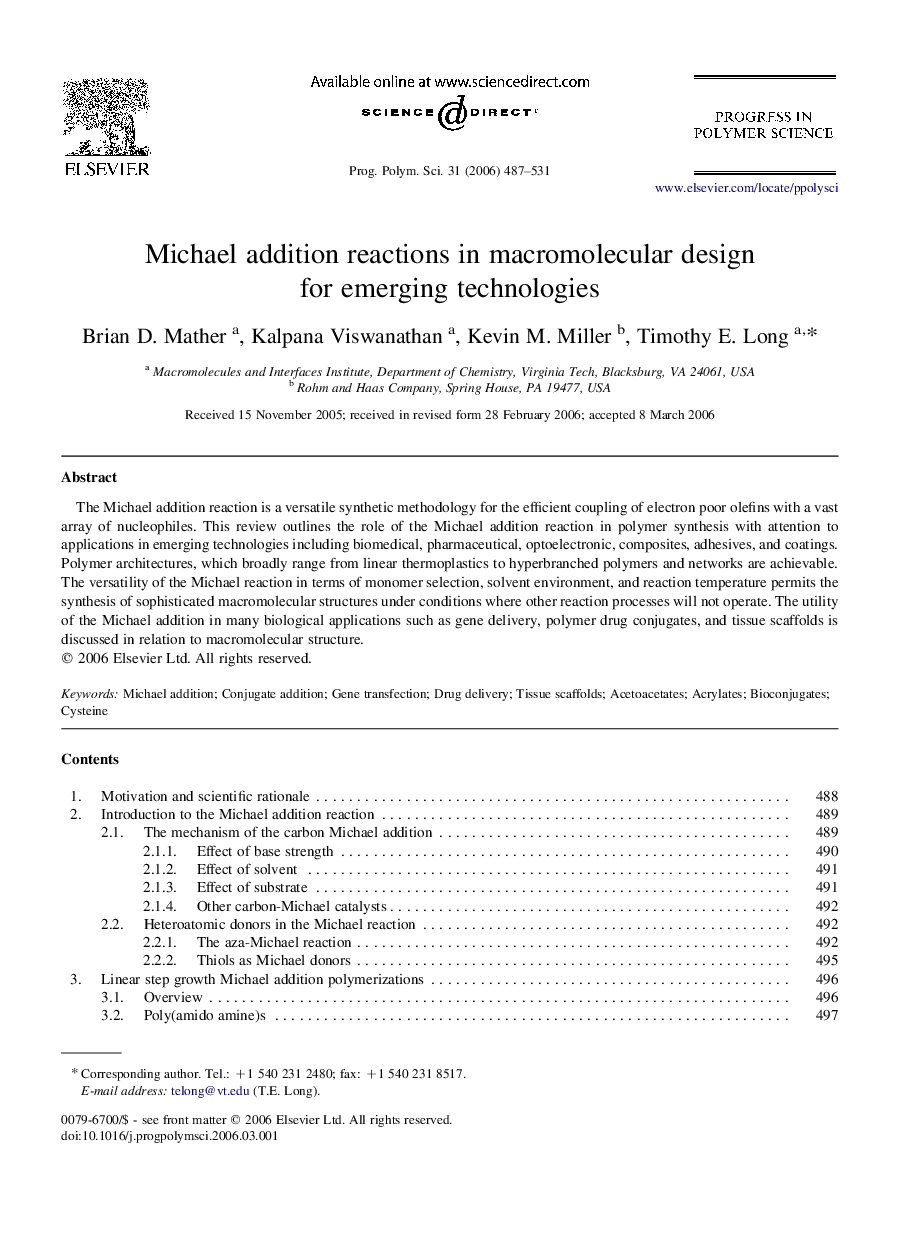| Article ID | Journal | Published Year | Pages | File Type |
|---|---|---|---|---|
| 5209097 | Progress in Polymer Science | 2006 | 45 Pages |
Abstract
The Michael addition reaction is a versatile synthetic methodology for the efficient coupling of electron poor olefins with a vast array of nucleophiles. This review outlines the role of the Michael addition reaction in polymer synthesis with attention to applications in emerging technologies including biomedical, pharmaceutical, optoelectronic, composites, adhesives, and coatings. Polymer architectures, which broadly range from linear thermoplastics to hyperbranched polymers and networks are achievable. The versatility of the Michael reaction in terms of monomer selection, solvent environment, and reaction temperature permits the synthesis of sophisticated macromolecular structures under conditions where other reaction processes will not operate. The utility of the Michael addition in many biological applications such as gene delivery, polymer drug conjugates, and tissue scaffolds is discussed in relation to macromolecular structure.
Keywords
Related Topics
Physical Sciences and Engineering
Chemistry
Organic Chemistry
Authors
Brian D. Mather, Kalpana Viswanathan, Kevin M. Miller, Timothy E. Long,
